
While many birds still have babies in the nest, the season is over for our peregrine falcons. Their nestlings fledged in early June and their young will soon be off on their own.
In July the webcams show us nothing but shadows, weeds and old feathers. Rather than pay to broadcast an empty nest the Pitt webcam stopped streaming in mid-June and the Gulf Tower camera will stop soon.
It’s a shame to have nothing to watch. To fill this gap – and because I miss seeing the peregrines myself – I made a slideshow of Pitt’s season highlights for my blog and for the Aviary’s website. See below.
Meanwhile, I’m sure you’re wondering how I got this recent close-up of E2 since I just said nothing’s on the webcam.
All year long E2 avoids the limelight. Unlike Dorothy, E2 prefers not to perch near windows. He avoids having anyone see him up close and this makes it extremely hard to read his bands and confirm that he is indeed the peregrine father at Pitt.
The solution is rather simple. In July E2 likes to visit the empty nest – who knows why – so we zoom the webcam and use the motion-detection snapshots to read his bands. Here he is four days ago blatantly presenting his banded leg to the camera.
If I go by his appearance I’m sure it’s E2 with his white forehead and swaggering stance, but his bands are a little hard to read. I’ll have to wait for another good snapshot to be sure.
(This and the slideshow photos are from the National Aviary’s webcam at Univ. of Pittsburgh)

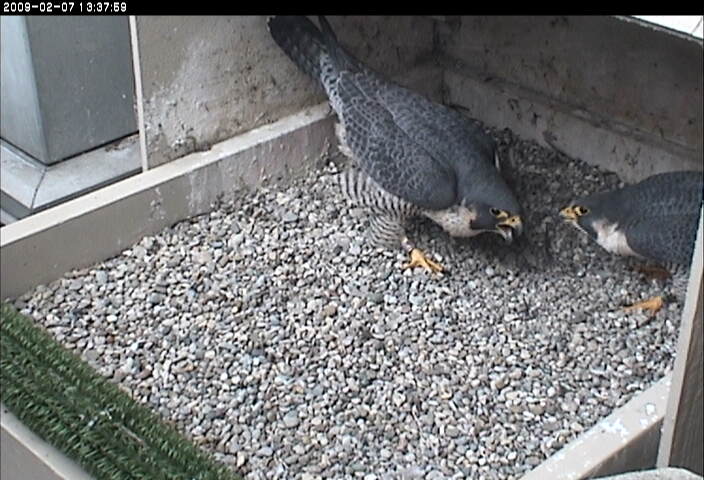
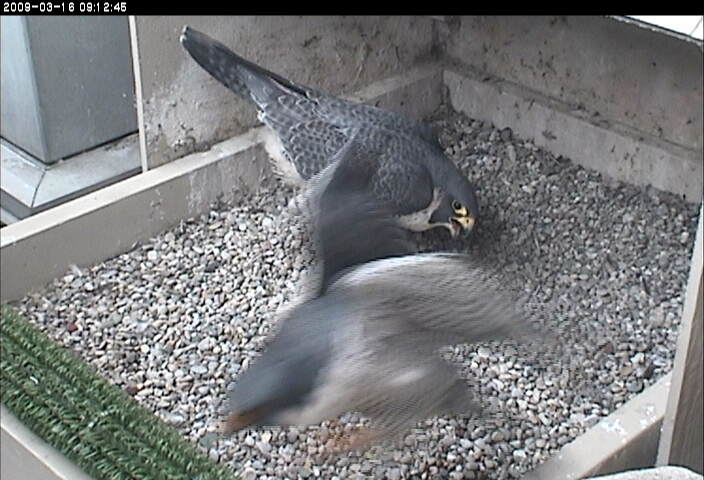

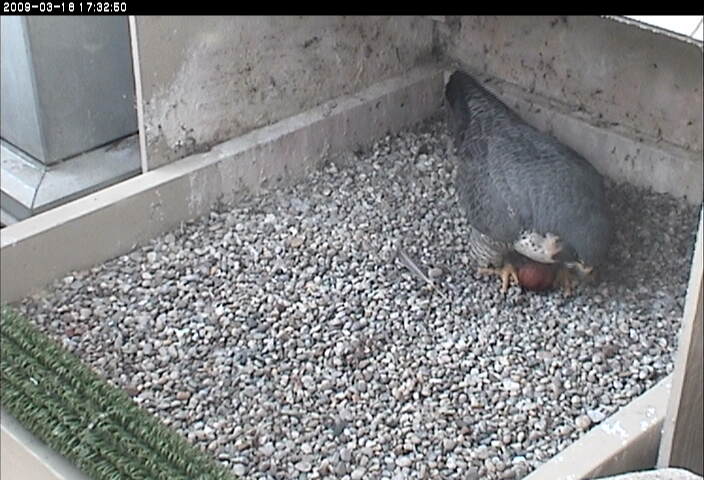










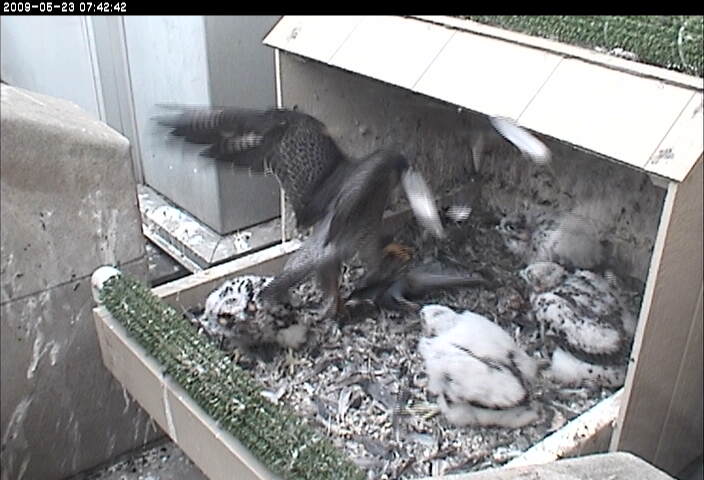
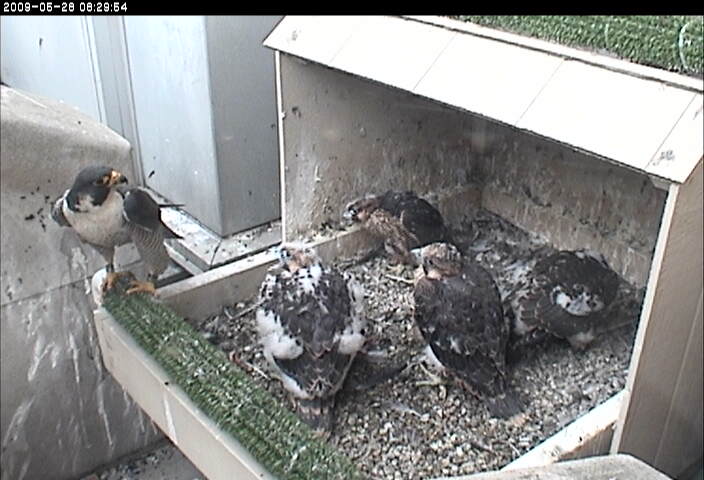

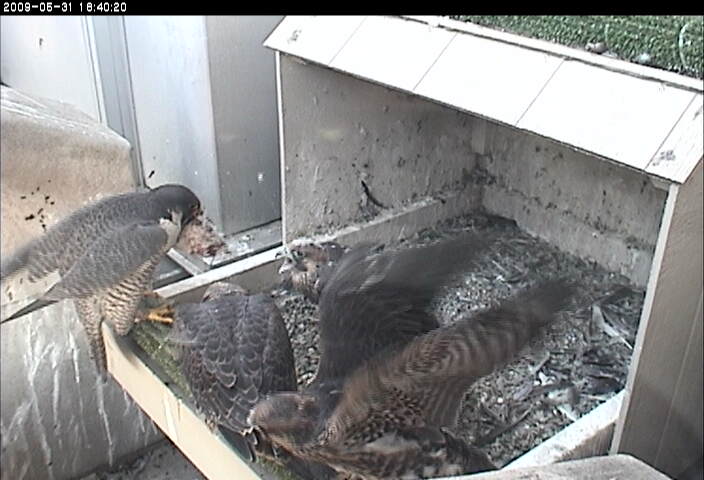
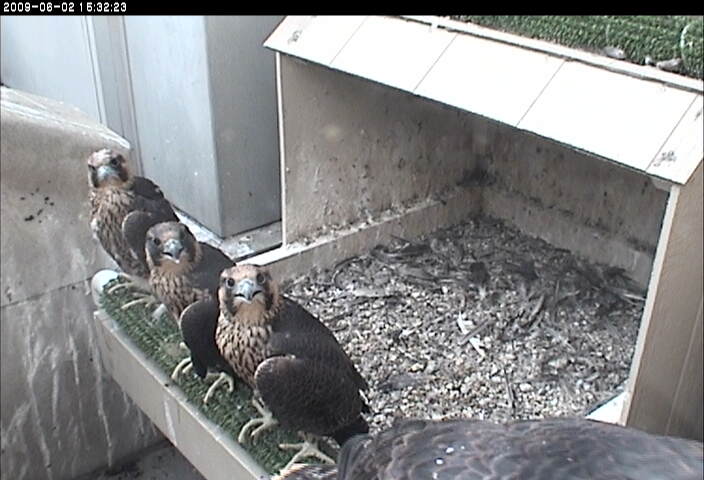

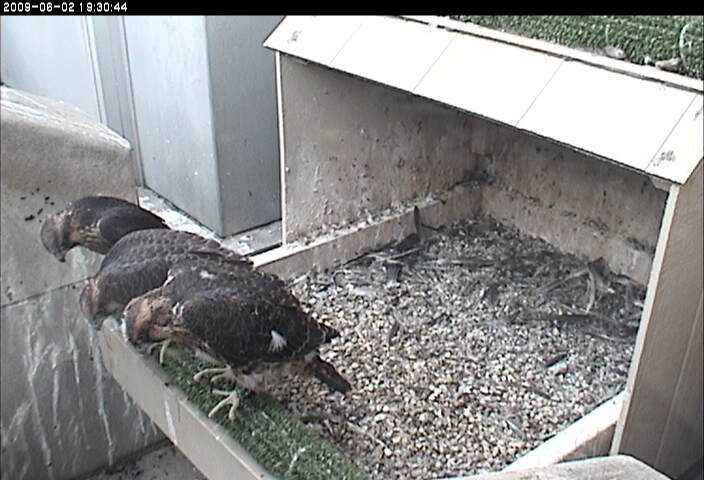
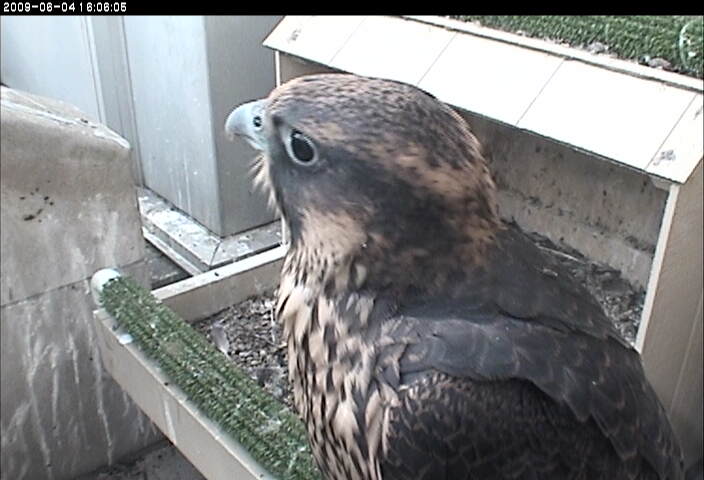
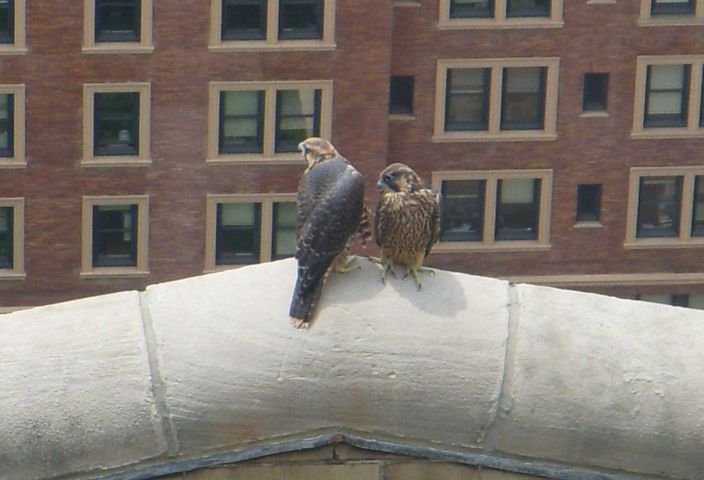
The slideshow was great to watch. It will also give us something to go back to until next year. Thanks
What a wonderful slide show. You can really see how quickly the babies grow from the weekly pictures. And you have to love the “3 little falcons sitting on a perch” sequence. Thanks, Kate.
The season goes so quickly! What a marvelous slide show. Thanks, Kate!
Thank you so much for the little “movie” highlights and updating us on the GT baby. You have given all of us such enthusiasm for this program and the other nature glimpses that you provide. You are such a hidden gem yourself along with the little hidden flowers in the woods of PA. Faith C.
A great show. Kudos to the photographer(s)? It is amazing to see how quickly they grow and develop, and know from reading your site what great parents they make, teaching the youngsters what they need to know. Thanks.
All the slideshow photos are from the webcam. It’s an amazing tool. We’re so lucky to have it.
and we are very honored to have one of your young ones, Beauty, here in Rochester, NY. Now that she and her mate Archer have found the Times Square nest box, we hope that there will be young fledglings flying over Rochester next year.
I can’t believe the season is over already. Although here in Wilmington we’re hoping maybe it’s not over yet. I know it’s HIGHLY unlikely but our falcons are sure acting like they’re up to something! I’m sure we’re getting our hopes up for nothing but it’s a nice thought anyway…
How many days until next year’s season begins?
p.s. Great slideshow Kate! I really enjoyed watching that!
I think Faith’s line about you being a “hidden gem” is very insightful. You have a beautiful style of writing and you offer your readers both knowledge and appreciation of the wonders surrounding us.
How close do the juveniles stay this early in the year? This morning, again walking Liffey, I saw a falcon in the inner quad at CMU. This time (s)he was perched on the top of a chimney or air vent on the highest point of the building directly across from the statue of the Chinese engineer. I don’t remember his name, but it’s a point of reference if anyone wants to check it out. Anne
I’ve seen that bird too. If we saw the same bird, I think it’s one of the young red-tailed hawks born on the roof of the Fine Arts Building. I wrote about him/her here: http://www.birdsoutsidemywindow.org/2009/06/16/red-tail-rescue-act-one/
The young hawks and falcons stay around for about a month after they learn to fly. Then they begin to widen their scope and aren’t seen near home. I’ve noticed with the local red-tails that “staying around” can be longer, depending on the hunting ability of the youngster.
My hawk is still at CMU. I’ve claimed her as my own (I choose to think of her as a girl, for no reason) and she’s so cool! We’ve seen her several times, sometimes swooping low over the inner quad, but most often on her chimney vent. I am amazed at the number of people who don’t notice her activities. They look at me staring up in wonder, and when I tell them what I’m looking at, their reactions say “Whatever!” How can you not be awed by such creatures? Anne
So glad you’re enjoying her. (I, too, think it’s a “her.”) On Tuesday I saw 3 red-tails on campus on my way to work. I heard a juvenile red-tail hawk begging and then one of the parents flew in with breakfast. Both juvenile hawks went for the food and “she” got the meal and flew off with it in her mouth. Yum!